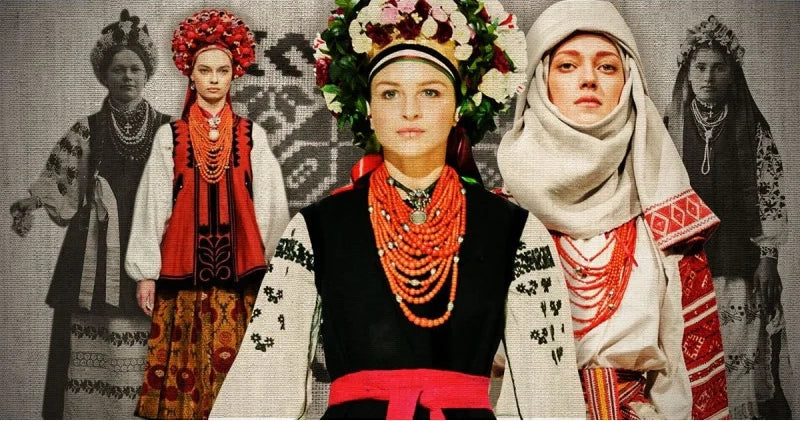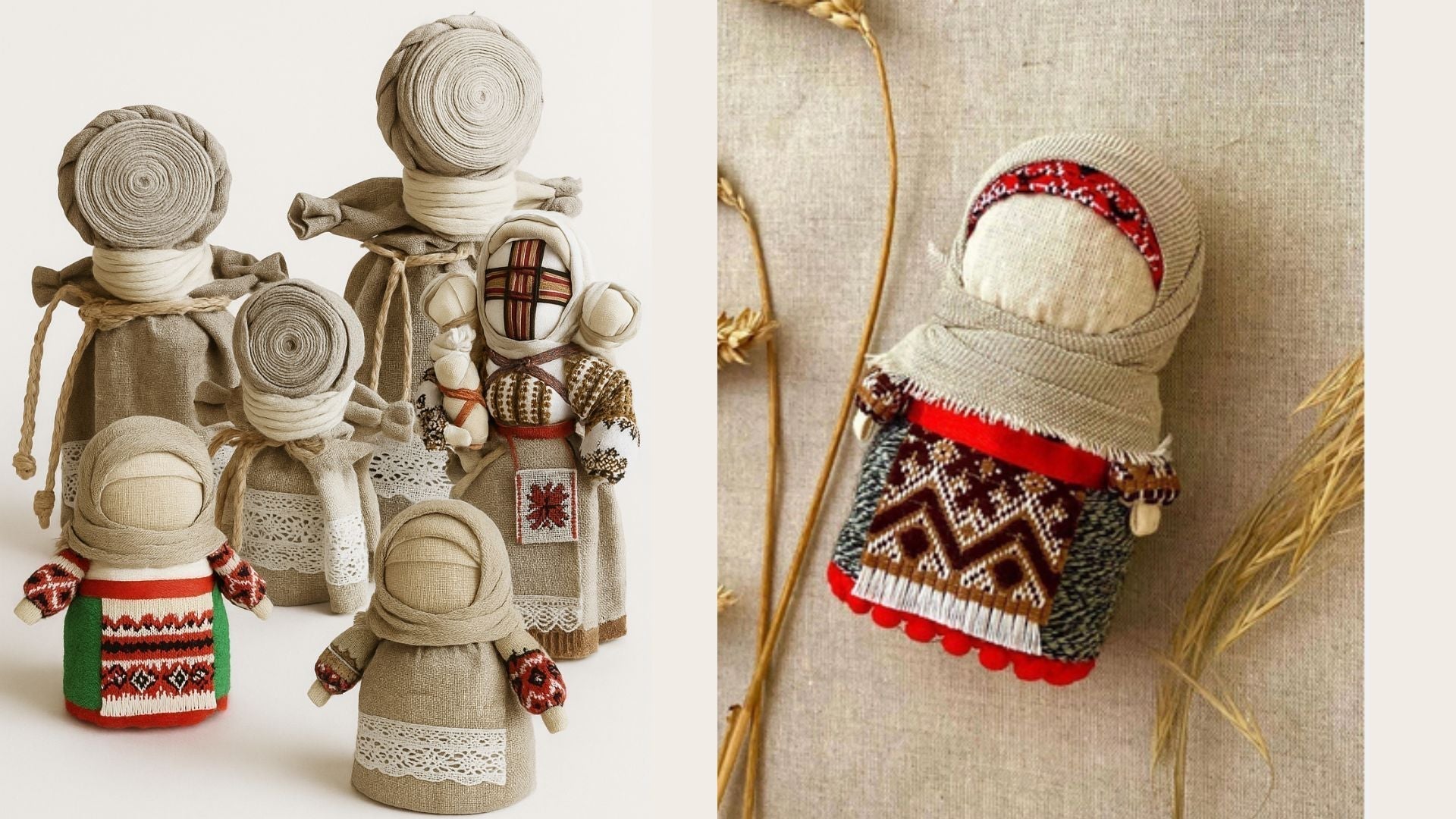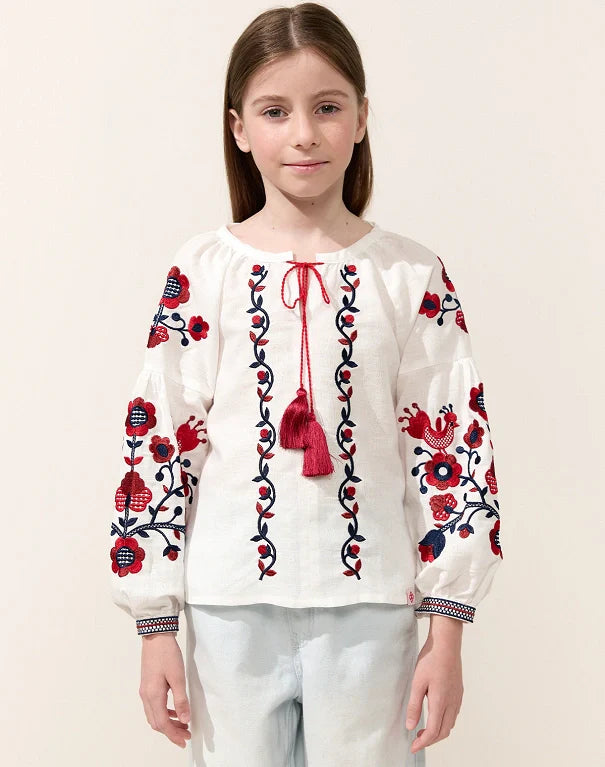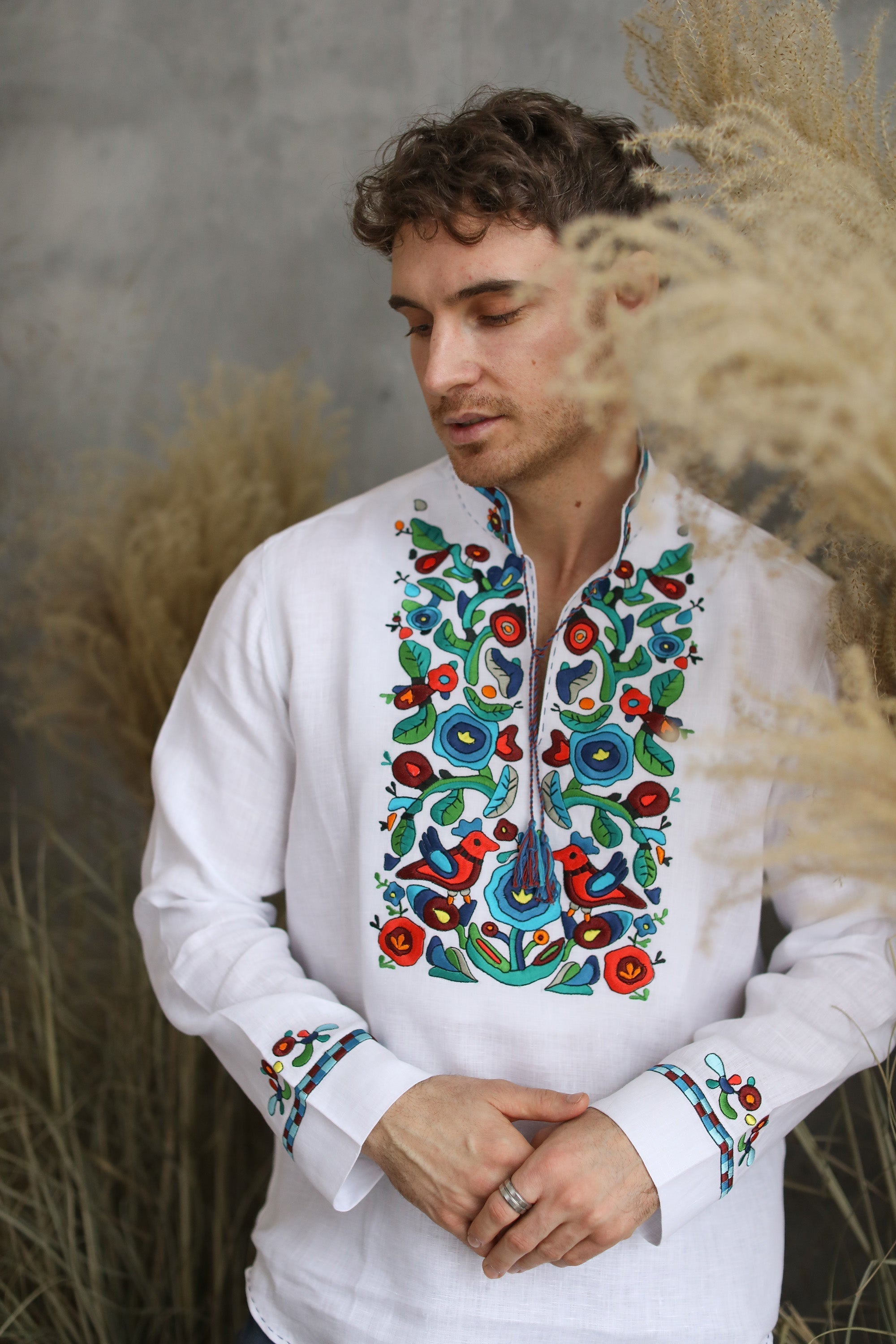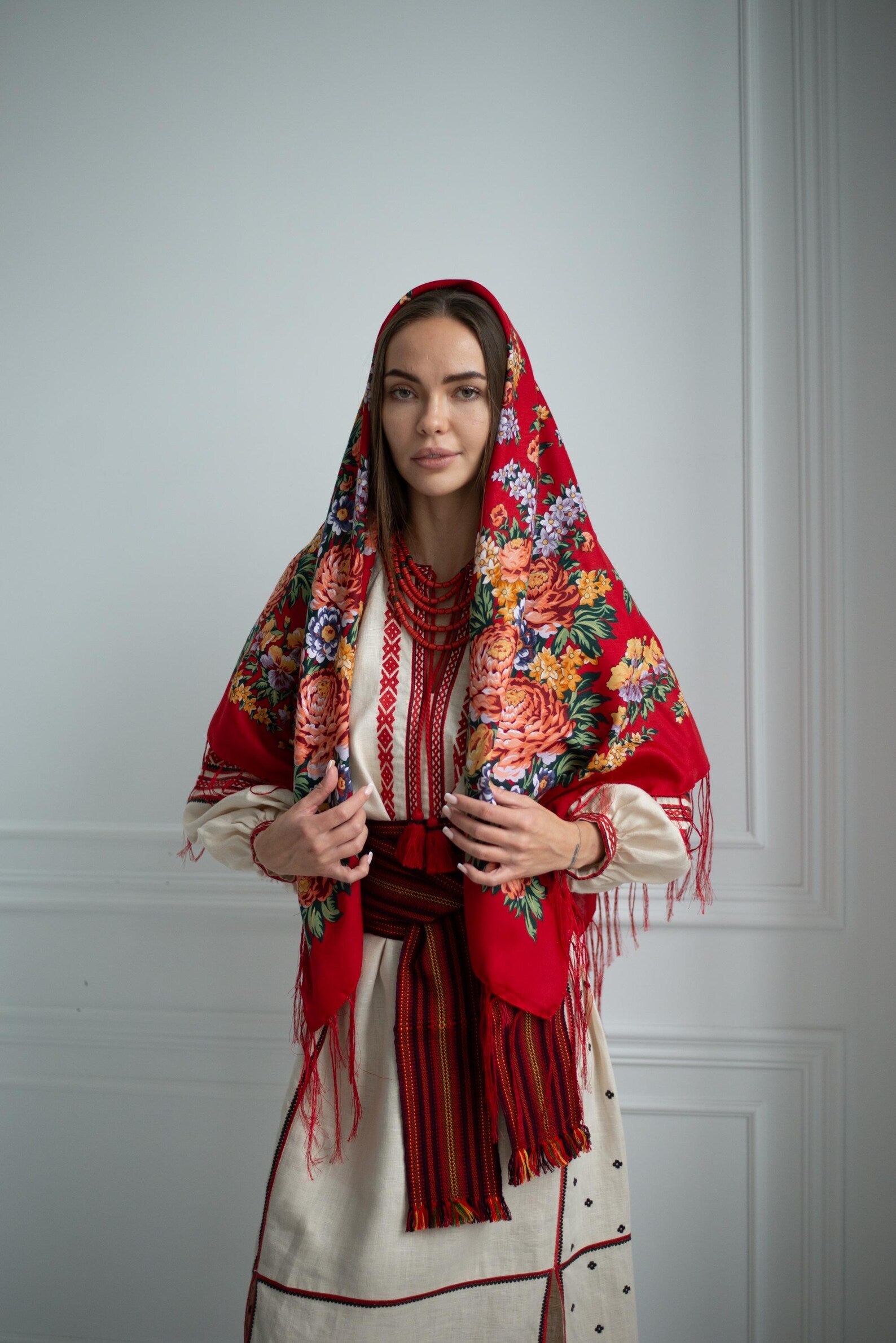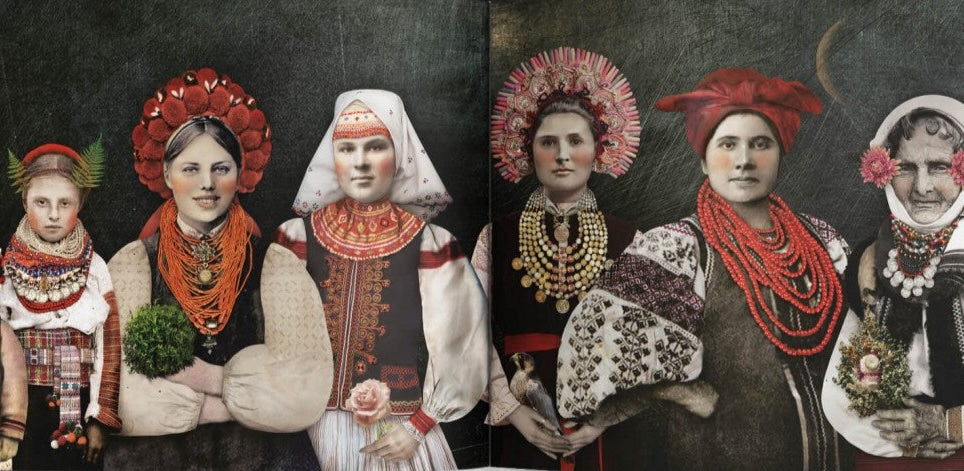
The History of Vyshyvanka: A Journey Through Ukrainian Embroidery
Origins of Vyshyvanka: Ancient Roots
Ukrainian embroidery, or vyshyvanka, traces its origins to ancient times, with roots in the pre-Christian era of the Trypillian culture (circa 5000–3000 BCE). Archaeological findings, such as pottery and figurines, reveal geometric patterns that resemble early embroidery designs. These motifs, including zigzags, diamonds, and solar symbols, carried spiritual significance, often symbolizing fertility, protection, and connection to nature. Woven into linen garments, these patterns laid the foundation for the vyshyvanka as a cultural artifact.

Medieval Development: A Symbol of Identity
By the medieval period, particularly during the Kyivan Rus’ era (9th–13th centuries), embroidery became a widespread craft. Women in villages and towns adorned clothing with intricate stitches, using techniques like cross-stitch and satin stitch. Each region developed distinct patterns, reflecting local traditions and beliefs. For instance, Poltava was known for delicate white-on-white embroidery, while the Carpathian region favored bold red and black geometric designs. Vyshyvankas were worn for rituals, weddings, and festivals, serving as both practical garments and talismans.
Cossack Era: Flourishing Craftsmanship
The Cossack period (16th–18th centuries) marked a golden age for vyshyvanka. As Ukraine’s cultural identity strengthened, embroidery became a marker of social status and regional pride. Wealthier families used fine threads, including silk and gold, while rural communities relied on homespun linen and natural dyes like madder root and indigo. Patterns grew more complex, incorporating floral motifs and symbolic designs like the kalyna (viburnum), representing love and resilience. Vyshyvankas were cherished heirlooms, often passed down through generations.

19th Century: Industrial Influence and Preservation
The 19th century brought challenges and changes. The Industrial Revolution introduced factory-made fabrics and chemical dyes, making embroidery more accessible but threatening traditional techniques. Urbanization led some to abandon hand-crafted vyshyvankas for Western-style clothing. However, cultural revival movements, led by figures like Ivan Franko, who proudly wore vyshyvankas, sparked renewed interest. Ethnographers began documenting regional patterns, preserving designs that might have been lost.
Soviet Era: Suppression and Resilience
During the Soviet period (1920s–1991), Ukrainian cultural expressions faced suppression. Vyshyvankas were sometimes dismissed as relics of “bourgeois nationalism.” Despite this, rural communities and diaspora groups continued the craft in secret, maintaining traditional techniques. Underground workshops and family traditions kept the art alive, with embroidered shirts worn during private celebrations or hidden under Soviet uniforms as acts of quiet resistance.
Modern Revival: Vyshyvanka as a Global Symbol
Since Ukraine’s independence in 1991, vyshyvanka has experienced a renaissance. Designers have modernized the garment, blending traditional patterns with contemporary fashion. Vyshyvanka Day, celebrated annually on the third Thursday of May, showcases the shirt’s cultural significance worldwide. Today, vyshyvankas are worn not only for cultural pride but also as a symbol of resilience amid Ukraine’s ongoing struggles. From haute couture runways to everyday wear, the vyshyvanka remains a powerful emblem of Ukrainian identity.



Symbolism and Legacy
Each stitch in a vyshyvanka tells a story. Red threads symbolize life and love, black represents the earth, and blue evokes the sky or spirituality. Regional variations—Hutsul, Polissia, Bukovyna—reflect Ukraine’s diverse heritage. Modern artisans continue to innovate, using eco-friendly materials and reviving ancient techniques, ensuring the vyshyvanka’s legacy endures.

You can also read more information in our book, Ukrainian Treasures The Hope Chest. Ukrainian Treasures.

And you can also push carts of Ukrainian embroidered shirts in our store.
